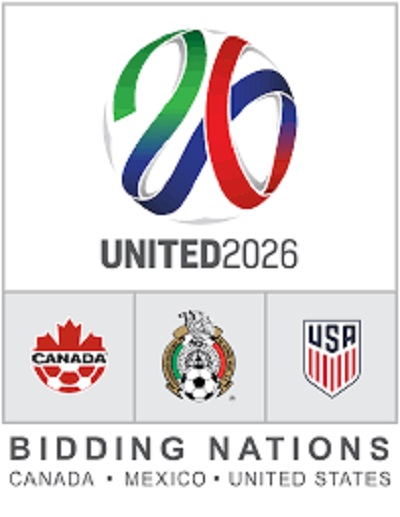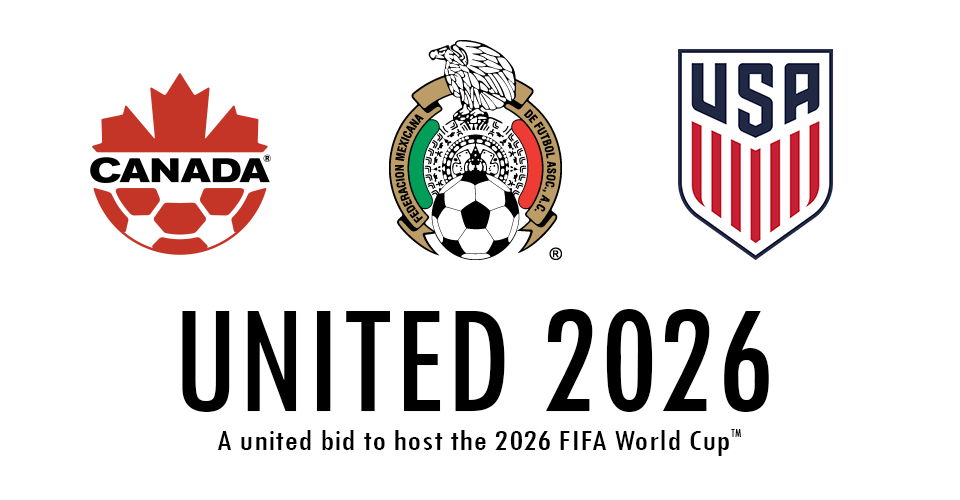
The 2026 World Cup hosted by the United States, Canada and Mexico promises to take the tournament to a new level, delivering more teams, bigger crowds and bumper profits.
FIFA had already decided to expand the 2026 tournament to 48 teams and by backing the joint bid it has also committed to holding the first tournament hosted by three countries.
Here is an overview of the bid:
– Stadium facilities –
Arguably the greatest strength of the North American bid is the vast array of already-built stadiums available to organisers, ranging from iconic World Cup venues such as Mexico City’s Azteca Stadium to state-of-the-art large-capacity arenas.
A total of 23 venues — three in Mexico, three in Canada, 17 in the United States — have made the final shortlist that will be considered for the tournament.
The average stadium capacity for the tournament is 55,000, with the largest the AT&T Stadium in Arlington, Texas, best known as the home of the Dallas Cowboys NFL team. The stadium, which has a retractable roof, has a capacity of 92,467.
The smallest is the 45,000-capacity BMO Field in Toronto, the football-specific home of MLS Cup champions Toronto FC.
US venues include the Pasadena Rose Bowl in Los Angeles, venue for the 1994 World Cup final.
The $4 billion stadium being built for the Los Angeles Rams, due to open in 2020, is also likely to feature.
– Financial windfall? –
Bid officials have given bullish financial projections, forecasting a record-breaking multi-billion-dollar profit for the expanded tournament.
Bid chairman Carlos Cordeiro has said the 2026 World Cup would hand world governing body FIFA a record $11 billion profit from total revenues of $14 billion.
That figure would shatter the $2.6 billion profit from the 2014 World Cup in Brazil.
Bid leaders say 5.8 million tickets would be sold, generating record gate money of $2.5 billion.
If the numbers hold up, 2026 would set a new record as the best-attended World Cup in history, with an average crowd of 72,500 per game, comfortably eclipsing the existing record of 68,991 set at the 1994 World Cup in the United States.
Commercial hospitality is expected to generate $1-1.5 billion, while media revenues could exceed $5 billion for the first time.
– History of success –
Canada, Mexico and the United States each have a proven track record of staging successful FIFA football tournaments, with Mexico hosting the World Cup in 1970 and 1986 and the United States hosting the 1994 finals.
Canada hosted the 24-team FIFA Women’s World Cup in 2015, as well as the Under-20 World Cup in 2007.
Mexico’s previous World Cups are widely regarded as two of the best ever, instantly evoking the magic of Pele and the 1970 Brazil team and the genius of Diego Maradona in the 1986 tournament won by Argentina.
Despite the scepticism that initially surrounded the 1994 World Cup in the US, the tournament was a runaway commercial and critical success.
The total attendance of 3.6 million spectators remains a record for a World Cup, despite the later expansion in size of the tournament from 24 teams to 32 in 1998.
– How will it work? –
While the bid emphasised unity between the three host nations, it is undoubtedly US-led.
The United States is slated to stage 60 matches, including every game from the quarter-finals onwards.
Canada and Mexico will stage 10 matches each. Final logistical details such as host city selection and fixture scheduling will ultimately be settled by FIFA.
Bid officials have said they plan to stage games in all three host nations on the opening day, with the main opening match likely to be held in either Mexico City or Los Angeles.
The North American bid book published earlier this year proposed the 84,953-capacity MetLife Stadium in East Rutherford, New Jersey, just outside New York City for the final.
Dallas’s AT&T Stadium and Atlanta’s Mercedes-Benz Stadium were floated as possible semi-final venues. – Agence France-Presse
































